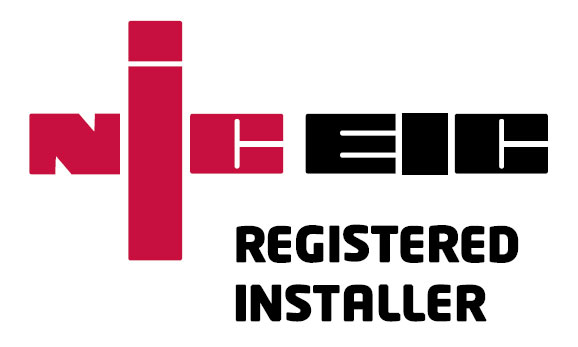Nobody likes noisy ventilation, it’s the most common complaint when you trawl the online forums. A poorly designed or installed system can sound like someone revving a moped above your head, but even a very faint background noise will eventually drive you to despair. It’s called the dripping tap syndrome in the trade. After life expectancy, the main difference between a budget system and a premium Adroit is acoustic performance. It’s the little details like the sound-proofed steel casing, the attenuating air distribution manifolds, and the ultra-low resistance ducting to reduce the workload.
To create an exceptionally quiet system you need an acoustic designer as much as a ventilation designer, and then you need the system installing exactly the way they’ve designed it. Someone who’ll specify an MVHR unit that’ll deliver your day-to-day ventilation at around 50% of its maximum capacity, because when motors are thrashed they don’t last long. Someone who adds anti-vibration feet and rubber decouplers by default, to stop the floor, wall, ceiling, and fixed ducting from humming.
If you’re very close to a neighbour they’ll enlarge the roof or exterior terminals to slow the air down as it enters and leaves the building, to prevent roaring noises and singing louvres. They’ll specify silencers directly off the MVHR to keep all attenuation in the plantroom or utility instead of above your bedroom ceiling. But above all, they’ll avoid tight bends and tee connectors on the ducting to improve laminar air flow and minimise air turbulence, because that’s where most noise problems originate. If all goes to plan you’ll barely know it’s running.
TECHNICAL NOTE: For Building Regs compliance everything must run below 30 decibels, equivalent to a whisper. For Passivhaus the limit is just over half that at 25 decibels, because sound doubles every 6dB(A). Technically, 3dB(A) is a doubling of Intensity and 6dB is a doubling of Level. So 25dB(A) isn’t 17% quieter than 30dB(A), it’s closer to 83% quieter.
Since 2009 Solarcrest have installed hundreds of MVHR systems. Budget and premium brands alike. We’ve also been servicing, repairing, and renewing units over the same period too. After a while you get to know the good, the bad, and the ugly. But in all that time there’s only on that never seems to come back. It’s probably why it’s the only unit with a seven-year product warranty. Take it from us, when it comes to reliability the Adroit has a proven track record.
It could be that the only moving parts are made by German or Swiss engineers, or the fact that the Adroit we specify will provide your day-to-day ventilation at around 40% fan power to keep it quiet and extend it’s life. Think of it as a big Mercedes cruising along at low revs rather than a Mini getting thrashed. Both will go 70 but one will be quiet, more comfortable, and will last a million miles more than the other.
Adroit quality might cost more to buy but it’ll cost less to own longer term. Your property needs MVHR forever.
Particulate matter (PM) is everything in the air that is not a gas. It consists of a huge variety of chemical compounds and materials, some of which can be toxic. When inhaled, these toxins enter the bloodstream and get transported around the body, lodging in the heart, brain and other vital organs. Exposure to PM can therefore lead to serious health issues, especially in vulnerable groups of people such as the young, elderly, and those with respiratory complaints. Heart disease, strokes, cancer, and dementia have all been linked to PM2.5 exposure.
But what’s most alarming is that the majority of the UK is exposed to unsafe levels of PM2.5 according to the W.H.O.
Because MVHR extracts and supplies air, the air it supplies can be filtered before you breathe it. Every MVHR includes a basic G4 filter to catch large particles like dust, insects, and leaf debris. Some suppliers swap this basic G4 for an F7 fine particle filter capable of stopping PM2.5, but when they do they’re relying on this expensive, impossible-to-clean F7 filter stopping everything. When that happens it gets blocked very quickly so needs replacing very often.
The Adroit is different because it has both a G4 and an F7, one behind the other. The G4 protects the F7 to extend it’s life, and the F7 protects you to extend yours.
SERVICING NOTE: The G4 should be vacuumed 3-4 times a year. The G4 and the F7 should both be replaced annually. NOx filters can’t be cleaned but should be good for 1-2 years depending where you live.
Study enough academic papers and you’ll discover the optimal environment for human occupation involves maintaining relative humidity in the 40-60% range, and CO2 concentration under 800ppm. They call it the ‘Goldilocks zone’ because it’s just right. Throw in air filtration to stop you breathing harmful microparticles and potentially harmful gasses, and you’ve got the ultimate in air quality.
The Adroit is the only MVHR with six Temperature, Humidity, and CO2 environment sensors to keep you in the zone automatically. If your property is getting too hot, it’ll automatically pull in cooler air in from outside assuming it’s available. If it isn’t, the Adroit can switch on an active cooling system if you have one installed. If your relative humidity gets too high, it’ll speed up the ventilation to bring it back down, or visa versa if your humidity drops too low. Similar adjustments are made if your CO2 levels creeps outside the Goldilocks zone.
Take a look at our MVHR cooling options.
Roughly speaking, every year a 200m2 property needs 2 million cubic metres of air supplying into it and another 2 million extracting from it. That’s dusty, damp, and normally contaminated air getting sucked in and sucked out of the property via a metal or plastic box. And that box also collects water from both air streams like a dehumidifier, sometimes litres per day. While all MVHR’s have filters to protect the machine as well as the property, some filters and some boxes are better than others.
To save cost budget MVHR’s are made of plastic, have a cheap polystyrene lining for insulation purposes, along with a pair of G4 mesh filters to stop some but not all of the muck. But when that lining gets damp and dusty over time the polystyrene gradually perishes. When that happens all the air you breathe gets drawn in over a mouldy, contaminated surface. See inside any 5-year old budget machine for details.
Unlike most units, the Adroit has a smooth powder-coated steel internal lining that can be wiped clean and sterilised indefinitely. It won’t get pitted, go mouldy or perish. Our unit is ten years old and still looks like new inside. Add to that the Airflex Pro ducting with its smooth anti-bacterial and anti-static lining that prevents dust collecting inside the pipes, and the grease filter inside the kitchen extract valve and you’ve got the most hygienic system possible.
Take a look at the Airflex Pro ducting brochure.
Connecting your MVHR to the Internet may sound like a feature you can live without. After all, is it really necessary to set programmes, adjust ventilation rates, and monitor your indoor environment from your smartphone? It’s neat because it saves fitting wall-mounted switches and controllers, but is it really essential? Short answer – yes if you value expert aftercare.
The main advantage of Internet connectivity is that you can get remote support without incurring engineer call-out fees. Whether that’s firmware updates over the air, adjusting programmes to better suit your lifestyle based on historic temperature, humidity, and CO2 data recorded on our Support Cloud, or just help diagnosing suspected faults. It’s not help you’ll need often, but when you do this feature will prove invaluable. Don’t forget, your property needs ventilation forever.
Other web-enabled MVHR units are available, but we find the Adroit offers the best functionality. It can even send signals to activate heating or cooling systems, or connect to your home automation.





